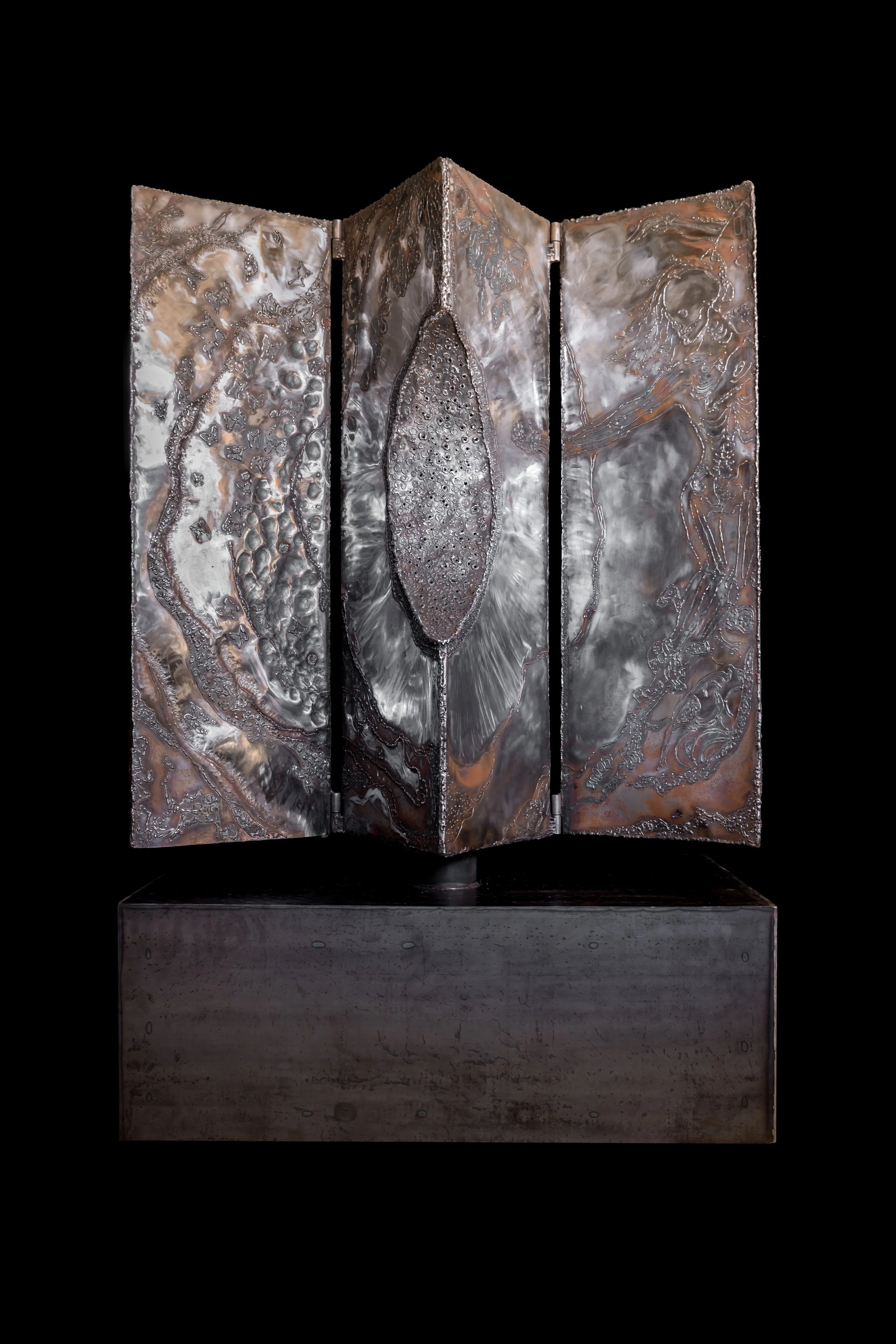Triad
I like a story that leads me to see things differently.
As a child, I was told the mythological story of the abduction of Persephone, goddess of spring, by the underworld god, Hades, and the frantic search for her by her mother, the grain goddess Demeter. After threats from her mother, Persephone was returned but not before she was tricked into eating six pomegranate seeds, food of the dead. By ancient law, for every pomegranate aril she ate, she was required to remain in the underworld with Hades. For the classical Greeks this was a metaphoric explanation for the cycle of the seasons and rebirth.
Each column in this kinetic sculpture embodies one of three interconnected Greek goddesses: Persephone, Demeter and Hekate. Both Persephone and Hekate have associations to both underworld and the living. Both have complex multi-faceted roles reflected in ancient art.
The classical Greek associated Persephone, Demeter and Hekate with the phases of the moon and with three stages of life: Maiden, Mother and Crone.
Hekate: Hekate, as the goddess of crossroads and ghosts, is able to easily cross between the earthly world and the Underworld. She can unlock the gates between realms, which includes opening the gates of death. And just as she protects entryways on Earth, she is also a guardian of the boundary that separates the living from the dead.
Demeter: Greek goddess of grain and harvest, mother of Persephone.
Persephone: also called Kore (“girl” in Greek), goddess of spring and Queen of the Dead, wife of Hades. She spends 6 months in the Underworld then returns to the land of the living.
Both Hekate and Persephone have roles in the Underworld and earthly responsibilities as well.
A deeper dive into the Triad sculpture.
In the making of this sculpture, I discovered that the ancient Greek word for butterfly is Psyche, which is also the word for soul. The butterflies on this section of the sculpture for me are evocative of Persephone’s association with the souls of the dead.

